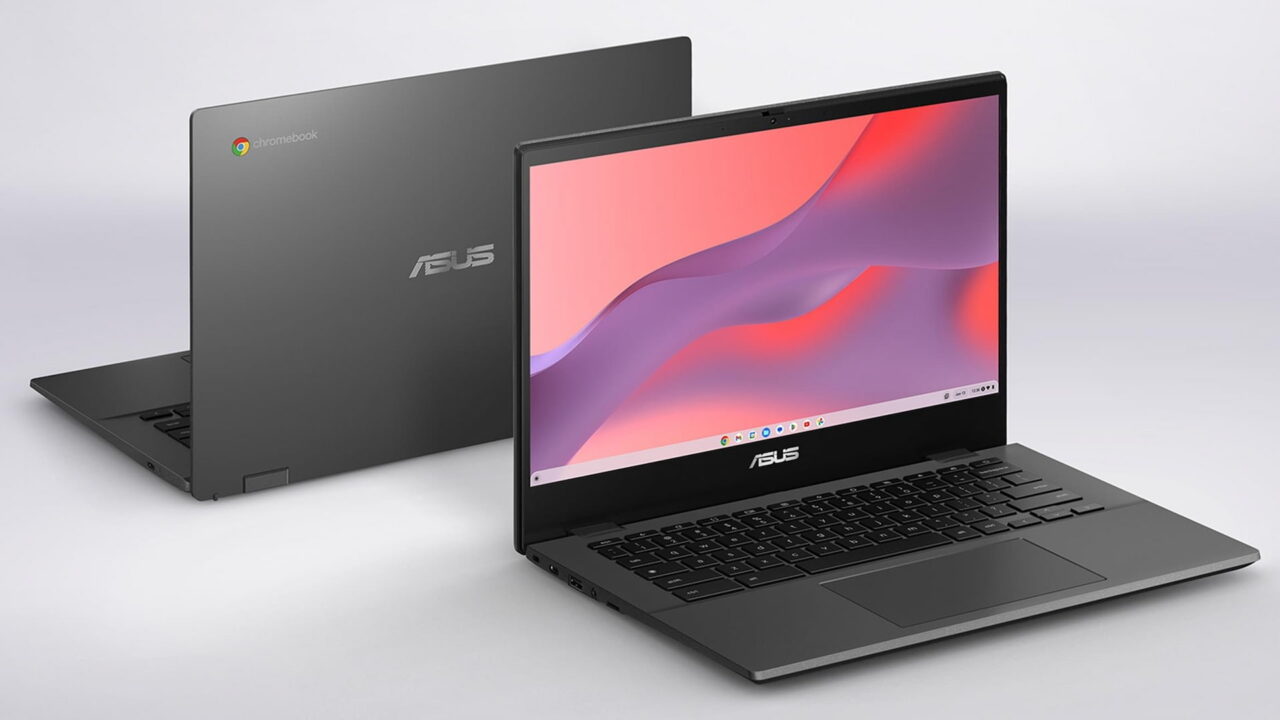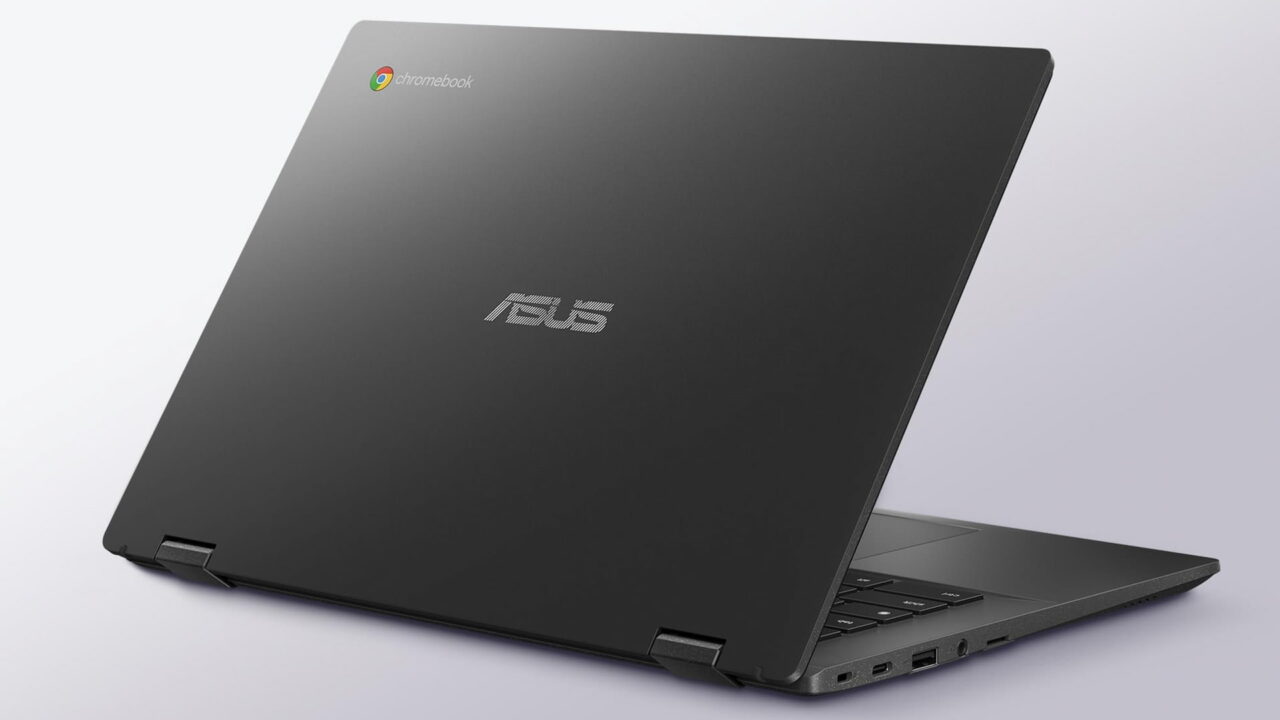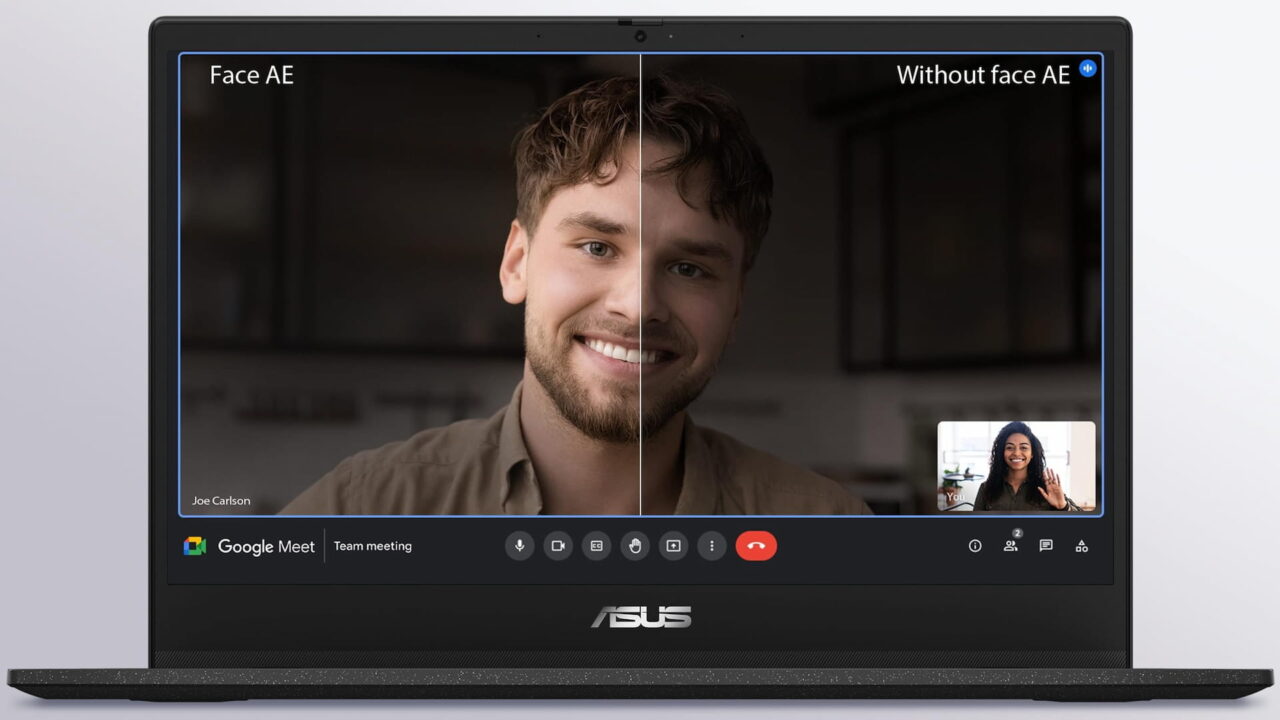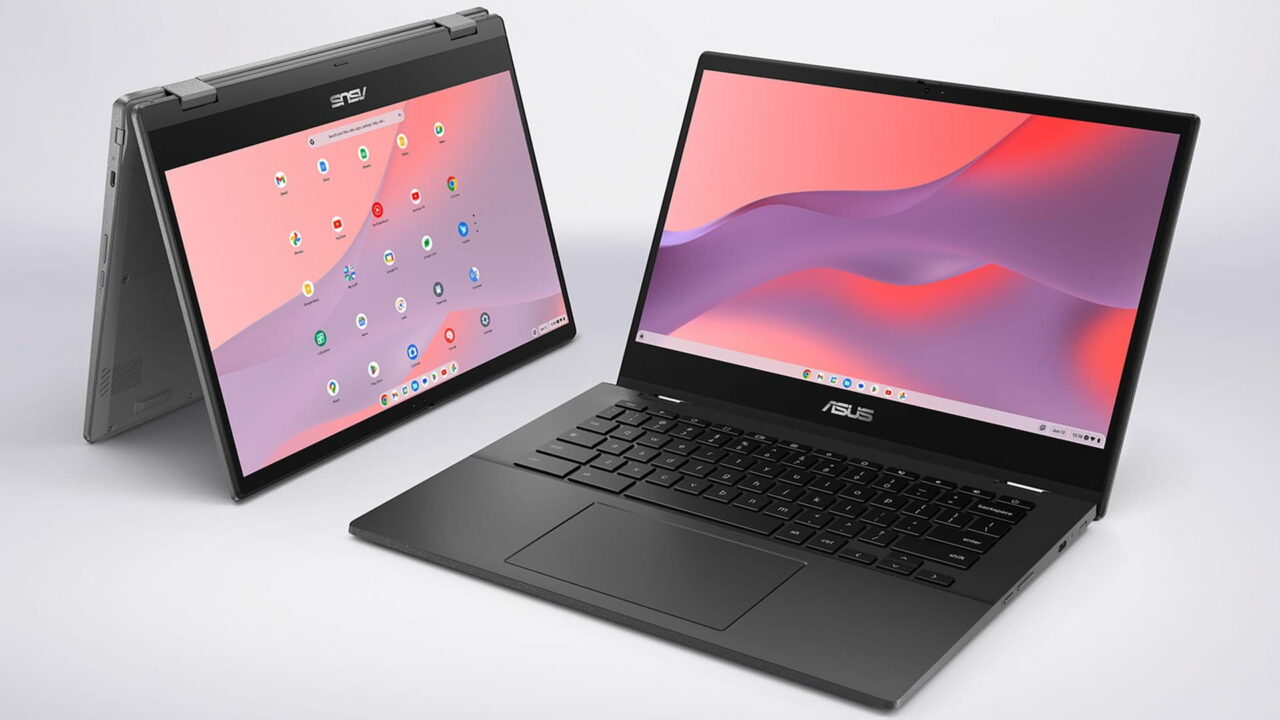It appears that Asus held back a little from last week’s Consumer Electronics Show. Yes, there were press releases of the Asus Chromebox 5 and Asus Chromebook Vibe CX34 Flip. But no mention of a MediaTek powered Chromebook that now appears on the Asus site. The new Asus Chromebook CM14 Flip with MediaTek Kompanio 520 chip promises battery life of 14 hours.
I got wind of the Asus Chromebook CM14 Flip, as well as a CM14 clamshell version, from George, a long-time reader of the site. He pointed out all of the product information, specs and a promotional video on Asus’ site for this 14-inch Chromebook.
At a glance, I’m not exactly thrilled to see that large chin bezel below the 14-inch screen. Aside from that, however, the Asus Chromebook CM14 series looks like a promising contender for the budget conscious.
No, there’s no pricing information yet, but based on the specs, I strongly suspect this is more of an entry-level Chromebook.

The MediaTek Kompanio 520 system on a chip is capable enough but it’s not going to provide the performance of the Kompanio 1200 or 1320 chipsets. A Kompanio 1200 powers the latest HP Chromebook X360 14b which costs $469.99, although it’s currently discounted by $110. I’m expecting Asus to start its pricing around $300 or so.
While the performance of the Asus Chromebook CM14 Flip may lag HP’s more powerful competitor, Asus is counting on long battery life to attract buyers. The company says the CM14 Flip model can run for up to 14 hours on a charge, while the clamshell version gains an extra hour of usage.
Most battery claims fall short of the real-world mark. However, I think 10+ hours of typical use would be a reasonable estimate for either of the Asus Chromebook CM14 models.

Here are the full specs of both:
| CPU | Octa-core MediaTek 520, 2 Cortex A-77, 6 Cortex A-55, Clock speed up to 2.05 GHz, fanless |
| GPU | ARM Mali-G52 MC2 |
| Display | 14-inch IPS 1920 x 1080, 16:9 aspect ratio, 250 nits brightness, glossy touchscreen and USI stylus support on Flip model only Note: The clamshell will have 768p and 1080p anti-glare options with 220 nits as well as a 1080p 250 nit option |
| Memory | 4 GB or 8 GB of memory |
| Storage | 32, 64 or 128 GB eMMC storage microSD card reader |
| Connectivity | 802.11ax (2×2) WiFi 6, Bluetooth 5.2 |
| Input | 1.5mm key-travel, spill-resistant Keyboard, dual-array microphones, 720p webcam with privacy shutter and Face Auto Exposure, 5.8-inch multi-touch trackpad |
| Ports | 2 USB Type-C 3.2, 1 USB Type-A 3.2, headphone/microphone jack |
| Battery | 2-cell battery, 42 WHr capacity, claimed runtime of up to 14 / 15 hours |
| Weight | 3.2 pounds; 3.44 pounds for Flip model |
| Software | ChromeOS automatic updates (estimated) through June 2031 |
While the expected battery run-time is a key feature, I’d say the generously sized trackpad is as well. Based on the images, Asus is making good use of the chassis size here. The display brightness is average for a Chromebook as is the webcam resolution. However the new FAce Auto Exposure feature may make up a little for the latter.

Expect to hear more details, such as pricing and availability later this year directly from Asus.
If the battery life claims do hold up, along with decent performance, a price around $300 would make for a compelling entry-level Chromebook.



2 Comments
The Kompanio 520 is roughly the Qualcomm Snapdragon 7c Gen 2. Both are 2 performance cores and 6 efficiency cores. The Kompanio has the advantage because the Cortex-A77 is slightly better than the Cortex-A76. But the Snapdragon will have the advantage in a lot of practical cases because the Adreno 618 GPU is WAY better than the Mali-G52 MC2 (while Geekbench 5 Vulcan is similar, it is 20% better on Centurion and 50% better on Antutu). I pay a big deal of attention on GPUs for Chromebooks because the desktop Chrome browser uses the GPU to run Javascript instead of the CPU, and obviously there is the Linux desktop productivity apps stuff.
On the ChromeOS side of things, MediaTek, Samsung and Qualcomm had their chances and blew it. (Though Google DOES share a huge part of the blame.) In the coming years, AMD chips on 4nm and smaller processes as well as the “Intel Processor” that is going to replace Celeron, Pentium and Core i3 with 4-8 efficiency cores are going to render them irrelevant. They are going to have much better multicore performance than ARM chips with outdated small cores – and note that no one has brought the Cortex-X core line to ChromeOS – while providing similar battery life. The same thing is going to happen on the server side with in 2024: Intel Sierra Forest (a server chip made entirely of LOTS of efficiency cores) and the 2024 AMD Epyc CPU that is going to have a completely insane 256 cores … at under 2.5 watts per core. (And unlike ARM server CPUs and even Sierra Forest, the CPU is going to have multi-threaded cores and support SMT.)
So yeah, in about a year or two the ARM frenzy that accompanied the M1 Mac is going to be over. That crowd is already wringing their hands over Apple’s issues in making a Mac Pro with their own chips instead of Xeons.
Looks yummy. I was just pondering the presumptuous practice of computer manufacturers to presume that a person who wants more RAM (you know, a rational person) wants or needs more storage. We are almost always forced to pay that 2-pack, when storage needs (lower) are a hallmark of what separates a Chromebook from the PC world. Additionally with the capacity to slip in a memory (micro SD) card, if you decide you want to store a bunch of video, solved!